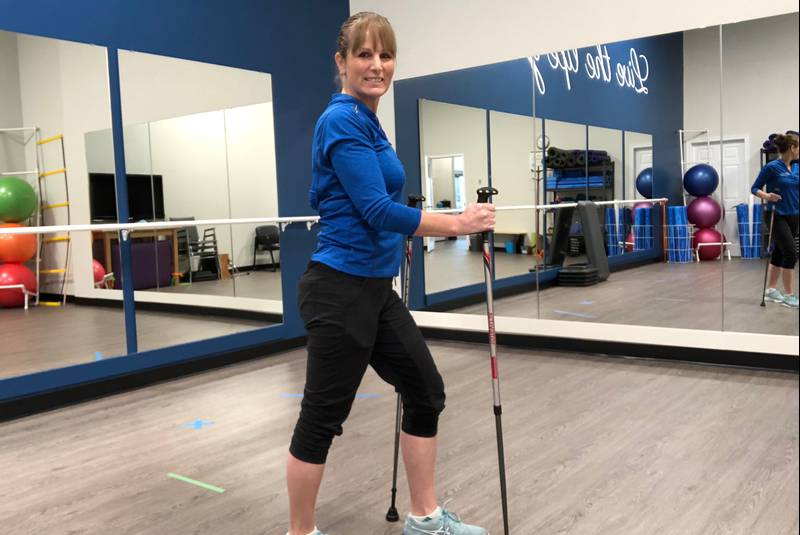Book an assessment with Zoomers now!
Use our online booking tool to find a time that works for you!
f you’ve read my other articles, you know I am passionate about helping seniors in Nova Scotia live well. To live well, we must optimize physical and mental health. One key factor in achieving those goals can be waling quality. Throughout my career as a physiotherapist, I have realized just how impactful a walking program can be to seniors’ mental health in Nova Scotia.
For a walking program to optimize seniors’ mental health in Nova Scotia, their walking quality must include several components; a good stepping pattern (heel to toe), adequate step length, and adequate speed. Three of the main factors that can have a negative influence on these components of walking are pain, unsteadiness, and “bad habits”.
As a physiotherapist in Nova Scotia, I identify how these factors affect my clients’ walking quality and guide them through exercises designed to address their individual needs. One of my favourite tools to use during this process is a set of walking poles.
The use of walking poles began approximately 40 years ago as an extension of cross-country skiing training. There has been a significant evolution in walking pole construction and techniques to make their use beneficial to a wide group of people, including seniors. Pain and other factors that limit our ability to get out walking can affect seniors’ mental health in Nova Scotia. Here is how using walking poles can address these factors to improve walking quality.
Pain
Painful joints are a common cause of altered walking patterns as people adjust their movement to avoid discomfort. These shorter and uneven step lengths commonly lead to a limp.
Walking poles can reduce the pressure on the ankle, knee, and hip in each step. In a typical 10-minute walk, we take 1000 steps (500 per leg). A small reduction in joint pressure done 500 times can have a big impact on comfort during walking, and ultimately improve seniors’ mental health in Nova Scotia. As the pain reduces, the need for a limp disappears and walking patterns can normalize.
Unsteadiness
The feeling of unsteadiness can cause seniors to walk with their feet further apart, take shuffling steps and reduce their arm swing. Walking poles introduce two more points of contact with the ground; which improves the ability to maintain a steady balance while walking. With that steadiness, it becomes easier to normalize the stepping pattern and the arms are reminded to swing due to the need to move and plant the poles with each step. Walking poles can help improve your confidence in your walking and are therefore useful tools to help seniors mental health in Nova Scotia.
“Bad Habits”
One of the most common issues I see with walking quality is the lack of heel to toe patterning in each step. Every step we take should start with a heel contact and then roll through to a push off the ball of the foot. Pain, balance issues, weakness and previous injury all contribute to a loss of this natural heel-to-toe pattern in each step. The increased confidence and comfort that seniors often experience with walking poles can allow easier retraining of this pattern.
Walking poles are a great tool to improve walking quality, and ultimately improve seniors’ mental health in Nova Scotia. However, it is always a good idea to consult a physiotherapist to find out if they are appropriate for you and to learn the related exercises to maximize your strength and stability. If you’re ready to get started, book an assessment with a Zoomers physiotherapist to find out how to safely incorporate walking poles into your walking program.
Book an assessment with Zoomers
Use our online booking tool to find a time that works for you!


